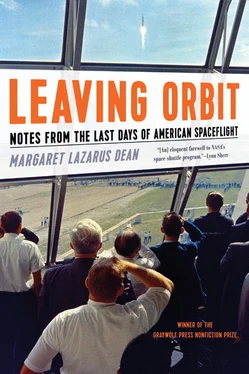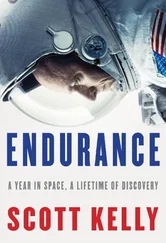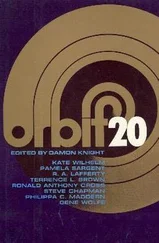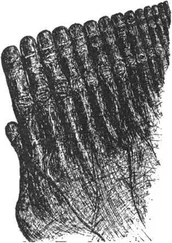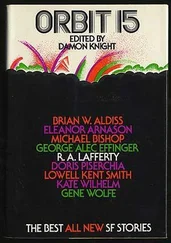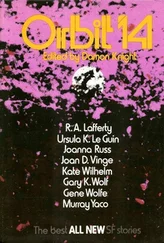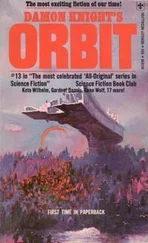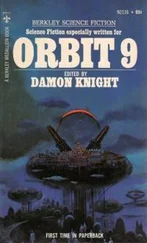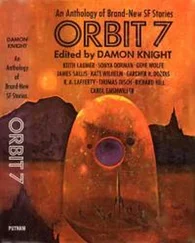You wouldn’t necessarily know that you were at the Kennedy Space Center, the swampy, improbable spaceport that inhabits 219 square miles of mostly untouched wilderness in central Florida. The only clue to what goes on here is a roadside sign with the NASA logo and changeable numbers reminding workers how many days remain until the next launch. Kennedy Parkway runs past a wild beach and, past that, the narrow strip of land from which American spaceships leave Earth. Most of this square mileage is a wildlife refuge, closed to any type of development for over fifty years because of the potentially explosive nature of what goes on here. In this way, the tour guides tell their busloads of tourists, technology and nature can help each other.
It’s fall 2010. I’m sitting in the backseat of a rental car being driven by my father; in the passenger seat is his wife, Judy. We all found each other at baggage claim in the Orlando airport late last night, having flown in from two different cities, and shared a car out to the coast. There is a special urgency to this trip because the space shuttle program will end soon, and this is one of the last opportunities I or anyone else will have to see the Kennedy Space Center as a working spaceport. The era of American spaceflight that started in 1961 when Alan Shepard became the first American to travel in space is about to come to an end, and few people seem to notice or care. Two more space shuttle missions are scheduled: STS-133 and STS-134. (STS stands for Space Transportation System, the original name for the space shuttle program from the seventies). A third mission, STS-135, will be added if NASA can get approval from Congress. This would mean one final launch for each of the three remaining space shuttle orbiters: Discovery, Endeavour , and Atlantis.
The decision to end the shuttle program was made quietly, and as a result many people are still not aware it’s ending. In the wake of the loss of Columbia in 2003, the investigation board tasked with uncovering the causes of the disaster pointed out the age of the fleet—the oldest surviving orbiter, Discovery , was then twenty years old. The investigation board’s report includes, on page 227, an item titled R9.2-1, Recertification. It recommends that NASA, “prior to operating the Shuttle beyond 2010, develop and conduct a vehicle certification at the material, component, subsystem, and system levels.” The destruction of Columbia had not been attributable to its age, but the board clearly feared the next disaster might be. The word sounds benign, but recertification would require the shuttles to be taken apart, examined, tested, and rebuilt from the ground up. This process would be prohibitively expensive, and everyone knew it; the inevitable consequence of this recommendation, barring some unforeseen change, was that NASA would have no choice but to retire the shuttle when this date arrived. In this paragraph the end of the shuttle is written.
By adopting the Columbia Accident Investigation Board’s recommendations, the Bush administration in effect set a 2010 end date for the shuttle. That date will be extended a bit to allow for assembly of the final components of the International Space Station, but now in the fall of 2010, the last mission is in sight. Space fans and especially the spaceworkers around here have hoped the retirement decision would be reversed somehow, and still do, hoping against hope.
* * *
Wilderness, marshes, palm trees—then, all of a sudden, the Vehicle Assembly Building. From a distance, it looms. I’m directing my father from the backseat, using both the GPS function on my phone and a printout of e-mailed directions. I’m tempted to use the Vehicle Assembly Building as a landmark, but I know better because I’ve been here before: the vast size of the VAB makes it impossible to tell whether you are one mile or three miles away from it, and a turn that seems to be right before the VAB may in fact be three turns earlier. Marked with an American flag the size of a football field on one side and an equally huge blue NASA logo on the other, the VAB was the biggest building in the world by volume when it was completed in 1966, and it remains among the largest by volume to this day. No other single-story building comes close to equaling its size, if you are willing to accept that its 525-foot height constitutes a single story. The building is simply enormous in a way that people react to viscerally and emotionally, and its enormity is part of the reason the Kennedy Space Center was named one of the Engineering Wonders of the World. Visitors have not been allowed inside for over thirty years, and the tour buses that constantly crawl through the Kennedy Space Center all stop at the outer edge of the VAB’s parking lot. Tourists pile out to take pictures of each other, leaning back in an effort to fit more of the building into the frame. My own picture of myself outside the VAB dates to 2001, and in it only a small part of the building is visible over my shoulder. But today, I have plans to meet a stranger who says he can take me inside.
I’ve been here at the Kennedy Space Center twice before, twice have ridden the tour buses past the launchpads and hangars and landing strip, twice have paid my admission at the Visitor Complex to look at the artifacts, watch the IMAX movies, and eat at the Lunch Pad. Both times I was here to do research for my first novel, which revolved around the Challenger disaster. On those trips I’d known that I could come back if I wanted to, take another tour, see another launch, and it’s different now to approach the enormous facilities of the Space Center knowing how profoundly everything here is about to change. The relentless conquering of the future for which this place has always stood is now coming to a close.
I tell my father how far the turn will be from here. He grunts in agreement; he is following our progress using the GPS on his own phone. A terrible sense of direction is one of my father’s legacies to me; another is a love of spaceflight. When I e-mailed to tell him about the invitation I’d received for a behind-the-scenes visit, my father first responded that he very much hoped to be able to join me, but that he would have to check on some things first, to see whether everything could be covered at work. He e-mailed me again a few minutes later to say that yes, he would go, regardless. This was a once-in-a-lifetime opportunity, and he was going to be there no matter what. I’m pleased that I will be able to get him access to this experience, a re-creation of the Saturdays we spent exploring the National Air and Space Museum when I was a child.
I’ve been instructed to wear long pants and closed-toed shoes for my safety. I’ve been told to bring a picture ID that confirms my US citizenship. I’ve been warned that my tour may be canceled at any time for any reason because the Kennedy Space Center is a working space facility. A few days before, I booked a last-minute flight, asked my husband, Chris, to care for our three-year-old son by himself, and arranged for a colleague to cover my classes. My father and his wife made similarly hasty plans.
Now that I’m here on the Space Coast, I’m feeling nervous about meeting my host, Omar Izquierdo, a spaceworker who has invited me here today as his guest. I feel I know Omar because we are Facebook friends and because we share a love for the space shuttle, but, my more pragmatic friends point out, I don’t actually know him at all, don’t know for sure that he even exists. I’m grateful my father and his wife are here with me, though I know I would have come even if they hadn’t been able to make it. In my eagerness to visit restricted areas here and meet people who have worked to put spaceships into the sky, the risk that Omar is not what he claims to be is a risk I’m willing to take.
Читать дальше
